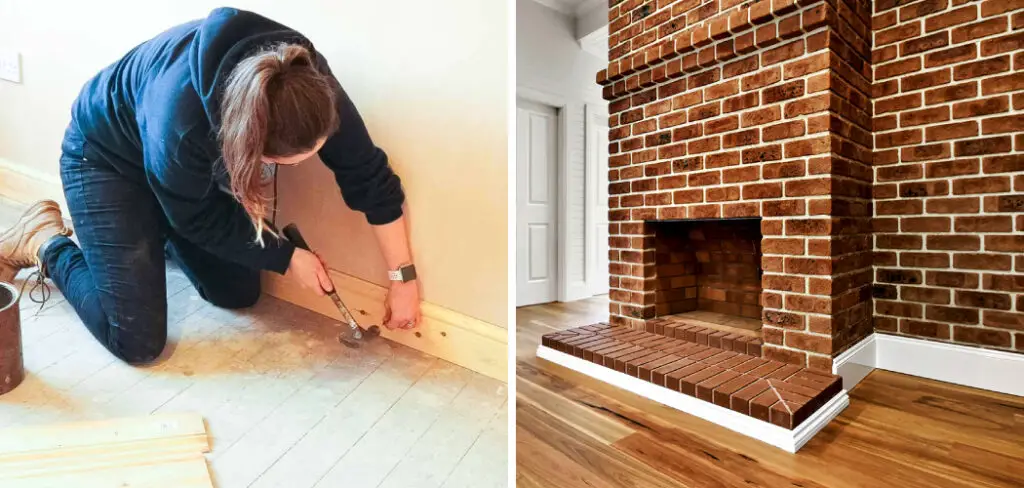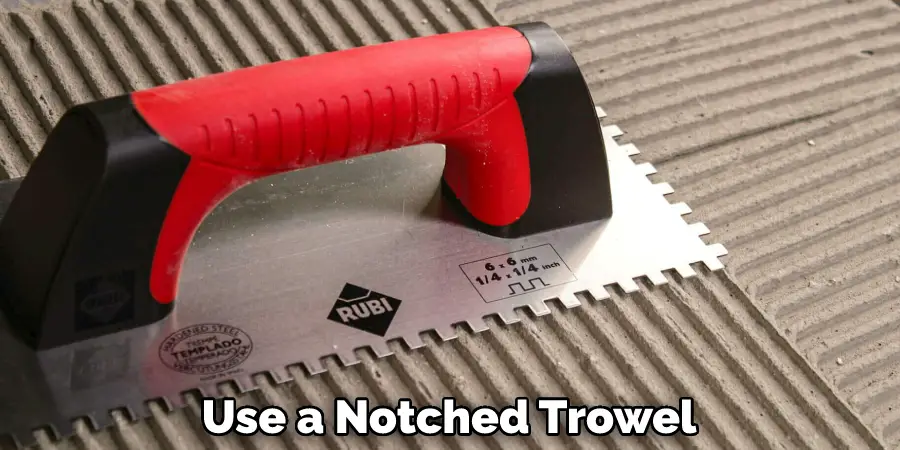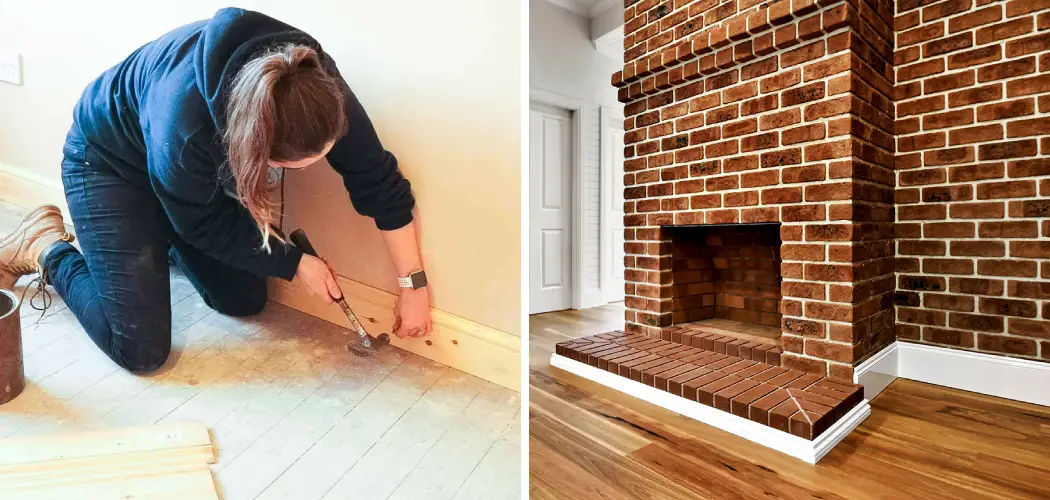Are you considering giving your home’s interior a revamp but don’t know where to start? Installing skirting boards on brick walls can make an immense difference in the overall look and feel of the space. Not only will it add character and texture, but you’ll find that it significantly increases the value of your home too. It may seem daunting at first.

However, with a step-by-step guide, any DIY enthusiast is capable of completing this project! In this post, we’re going to break down exactly how to install skirting boards on brick wall. From choosing materials to creating clean lines for a polished finish – keep reading for our detailed guide on installing skirting into brickwork.
Should Skirting Boards Be Nailed or Glued?
The answer to this question depends on the specific material of the skirting board being used. For hardwood, MDF, and laminate boards, it is best to use a construction adhesive such as Liquid Nails or No More Nails and then secure it with screws. This will ensure a strong bond between the skirting board and the wall.
For lightweight materials such as foamboard or PVC trim, nails are typically sufficient for installation. Be sure to predrill holes in the material before nailing it into place. Also, make sure that nails are driven deep enough into the wall so they don’t easily come loose over time.
In any case, it is important to take your time during installation and make sure all pieces of skirting board are firmly and securely attached to the wall. This will help ensure a long-lasting and professional-looking installation.
Finally, if you are using an adhesive, be sure to apply it properly in order to get a strong bond between the skirting board and the wall. It is best to use a notched trowel when applying construction adhesives, as this will help spread the adhesive more evenly.

What Is the Best Glue for Skirting Boards?
When it comes to skirting boards, the type of glue that you use is just as important as how you install them. It’s essential that the adhesive provides an excellent bond between the skirting board and brick wall so they remain secure until you replace them.
A strong construction adhesive like a polyurethane-based product can provide superior adhesion while also allowing some flexibility in case there’s a movement with the walls or flooring underneath. This type of glue creates a waterproof seal that’s resistant to temperature changes, too. When using this kind of adhesive, be sure to apply it evenly across the entire surface of both components before pressing them firmly together for a few seconds.
There are other types of glues available for attaching skirting boards, such as silicone sealants and contact adhesives. Silicone sealant is typically used in wet areas, such as bathrooms or kitchens, as it can provide a waterproof seal around the edges of the board. Contact adhesives are also useful for providing an extra-secure bond between the skirting board and the wall.
No matter what adhesive you choose to use, make sure that it’s suitable for use on both wood and masonry surfaces – check the label before purchase to ensure this compatibility. It’s also important to follow the manufacturer’s instructions when using any type of glue or adhesive product to ensure it works correctly. With the right materials and know-how, you can ensure your skirting board installation is secure and durable!
10 Methods How to Install Skirting Boards on Brick Wall
1. Measure and Cut the Skirting Boards
The first step in installing skirting boards on a brick wall is to measure and cut the skirting boards to the desired length. Use a tape measure to measure the length of the wall, and then mark the skirting board accordingly.
Use a saw to cut the skirting board to the correct length. If you are using multiple skirting boards, make sure to measure and cut each one individually. While cutting, be s ure to wear safety glasses and gloves.

2. Prepare the Wall
Before installing the skirting boards, it is important to prepare the wall by cleaning it and removing any debris or dust. Use a wire brush or sandpaper to remove any loose or peeling paint, and then wipe down the wall with a damp cloth to remove any dust or debris.
If the wall is uneven or cracked, it is recommended to use a filler to even out the surface before installing the skirting boards. Make sure to allow the filler enough time to dry before proceeding.
3. Mark the Wall
After cleaning the wall, mark the position of the skirting boards on the wall. Use a spirit level to ensure that the skirting boards are level, and then use a pencil to mark the position of the skirting boards. Alternatively, you can use a laser level to mark the wall. Although this is more expensive, it ensures that the skirting boards are level. If you are covering a large area, it is worth investing in the laser level.
4. Drill Holes in the Wall
Next, use a masonry drill bit to drill holes in the wall where the skirting boards will be attached. Be sure to drill the holes at a slight angle to ensure that the screws go in straight. If you don’t have a drill, you can use a hammer and masonry nails instead; however, it’s more difficult to get the skirting boards to stick firmly in place. While drilling, be sure to wear the appropriate safety gear and use a dust mask as well.
5. Insert Wall Plugs
After drilling the holes, insert wall plugs into each hole. Wall plugs are necessary to provide a secure hold for the screws that will be used to attach the skirting boards to the wall. Take care to ensure that the wall plugs are securely and firmly in place. If necessary, use a hammer to tap the wall plugs firmly into the holes. If the wall plugs don’t fit snugly, you may need to drill a slightly larger hole.
6. Attach the Skirting Boards
After inserting the wall plugs, attach the skirting boards to the wall using screws. Use a drill to insert the screws into the wall plugs, being careful not to overtighten the screws and damage the skirting boards. Once all the skirting boards are in place, use a spirit level to check that they are even. If necessary, you can adjust them using a hammer or mallet until you get them into the desired position.

7. Use Adhesive
In addition to using screws, it may also be necessary to use adhesive to attach the skirting boards to the wall. Apply a small amount of adhesive to the back of the skirting boards and then press them firmly against the wall.
This will provide additional support and help to ensure that the skirting boards stay in place. Use a spirit level to ensure that the skirting boards are straight before allowing the adhesive to dry fully. To ensure a secure bond, use a high-quality adhesive that is suitable for the type of wall and material used for the skirting boards.
8. Fill Holes
After the skirting boards are attached to the wall, fill any holes or gaps with wood filler. Use a putty knife to apply the wood filler and then smooth it out with sandpaper once it dries. If there are any large holes, you can use a piece of wood to patch it up before applying the wood filler. Additionally, once all the wood filler has dried, you can paint or stain the skirting boards to match the rest of your home’s décor.
9. Sand and Paint
Once the wood filler has dried and been sanded, it is time to sand and paint the skirting boards. Use fine-grit sandpaper to sand the surface of the skirting boards, and then apply a coat of primer followed by a coat of paint. Make sure to wait until each coat is completely dry before applying the next, and don’t forget the top and bottom edges of the skirting board, as these are usually visible.
10. Maintain the Skirting Boards
To ensure that your skirting boards last as long as possible, it is important to maintain them properly. Keep the skirting boards clean and free from debris, and avoid exposing them to excessive moisture or direct sunlight. If the skirting boards become damaged or worn, consider replacing them or repairing them as necessary.

Conclusion
All in all, installing skirting boards on a brick wall can be tricky but not impossible. The key is to take the right measurements, thoroughly prepare the surface, and be mindful of the specific needs of the type of skirting board chosen. You should also use quality tools and adhesives to ensure that the results are durable over time.
With this knowledge gained, Install your skirting board with confidence, knowing that you have all of the necessary steps to install it successfully! Now you know how to install skirting boards on brick walls – why not give it a try? Who knows – perhaps you’ll enjoy DIY’ing more than you think. Plus, when you look at your newly installed skirting boards and admire their perfect fit along your walls – it’s sure to make your entire room feel brand new!


